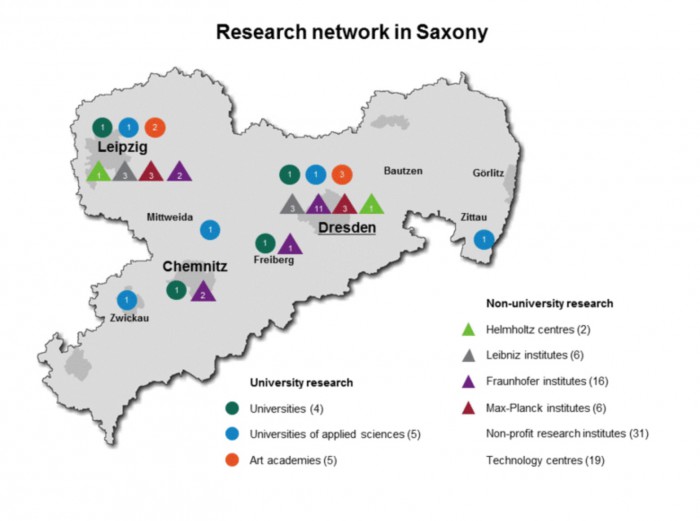15th September 2015 Berlin, Germany
Science and ceramics in Saxony
Saxony is a German state that has been in the news for all the wrong reasons lately. And so it was good that Martin Donnelly, Permanent Secretary at the Department for Business, Innovation, and Skills, decided to take a trip there in September to find out more about how Saxony does science and vocational training – at the invitation of the Saxony government.
Visits are always a good way of keeping Science & Innovation Network (SIN) Officers on their toes in terms of preparing briefing. The team in Germany often reminds London officials about how important the German states are in the overall German science system and so it was great that we had a visitor who was travelling outside the usual destinations of Berlin, Munich or Stuttgart. It gave us a chance to refresh our memories about what Saxony has to offer when it comes to research and innovation.
Saxony probably isn’t the first region you would think of if someone asked you to name a hub of science and innovation in Germany. The more obvious examples would be where you find most of the big research-intensive companies like Daimler, BMW, Bayer or Volkswagen in the south or north-west of Germany. And perhaps if you were looking in the former East you would automatically think of the Berlin-Brandenburg capital region. But with one of Germany’s 11 “Excellence” universities (Technical University Dresden) and a wealth of other research institutes (see picture), Saxony quite rightly sees itself as a region of scientific strength right at the heart of Europe.
And it has a tradition of scientific innovation to boot. Ask any German what Saxony is most well-known for and they might say wooden Christmas decorations from the Erzgebirge, but most probably they will answer: porcelain. Saxony, or more precisely Meißen, is the home of European porcelain manufacture. It is no surprise then that material science still remains one of Saxony’s great strengths. At the Fraunhofer Centre for Ceramic Technologies in Dresden (Europe’s largest R&D institute dedicated to the study of ceramics!), ceramics is still taken very seriously and today the applications go well beyond creating a pretty teapot. The Fraunhofer centre develops ceramic components for use in the automotive, energy and medical sectors, and since its establishment in 1992 it has developed expertise in test procedures for many other fields.
Of course this was just one the places Martin Donnelly visited on his trip to Dresden and Leipzig, but the visit has sparked the SIN Germany team’s interest in how we might be able to better connect ceramics expertise in Saxony with companies such as Lucideon in the UK, based in the UK’s traditional ceramics centre Stoke-on-Trent.
